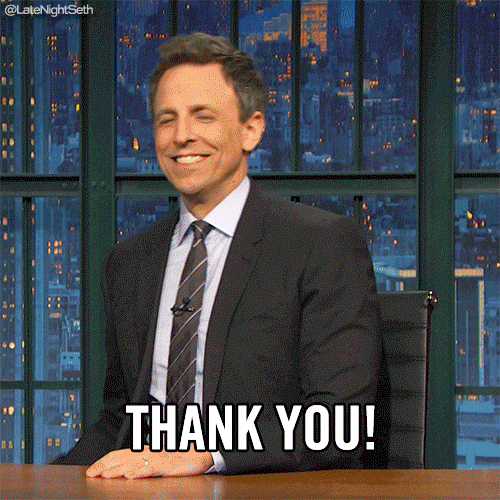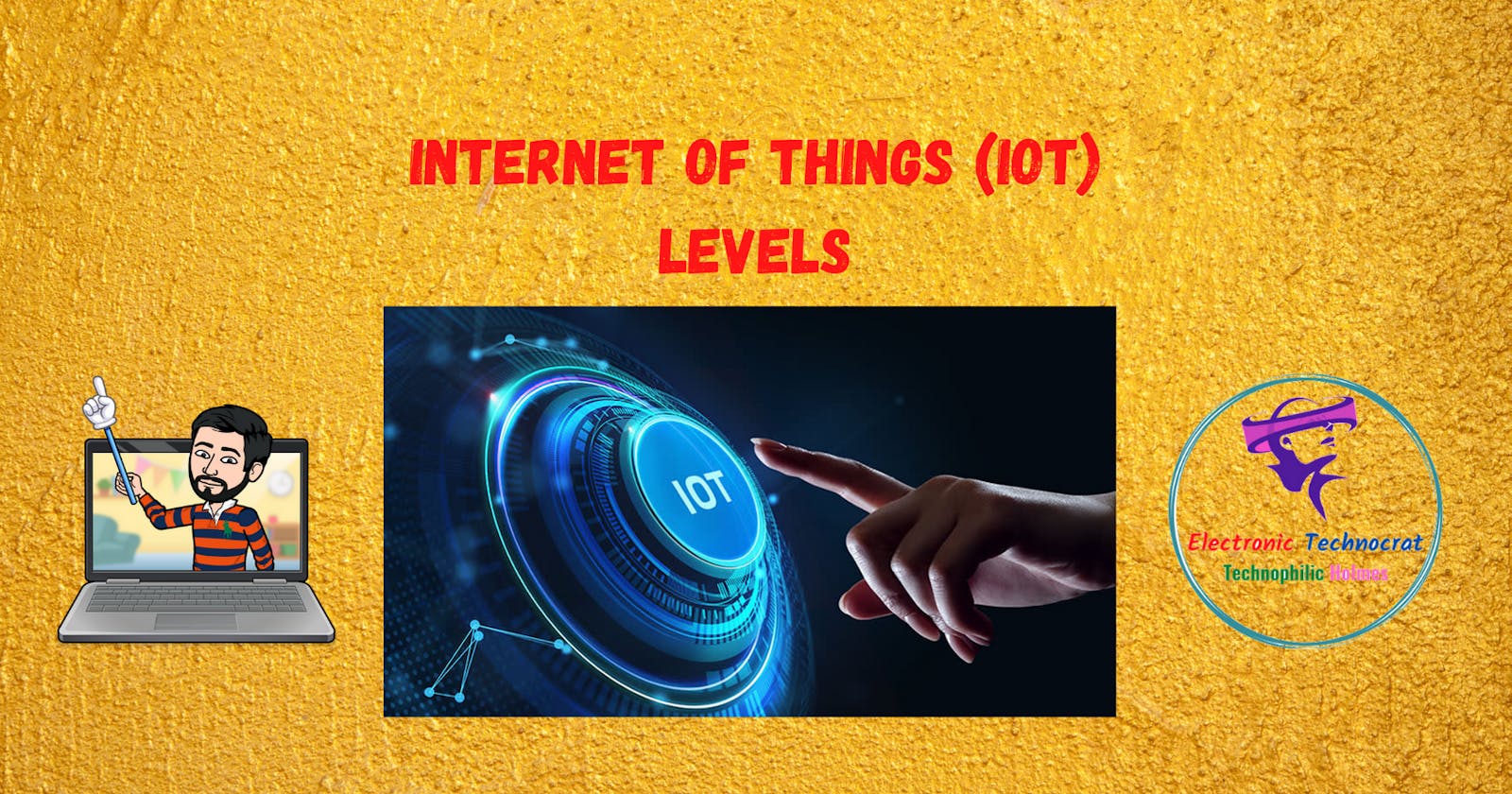“If you think that the internet has changed your life, think again. The Internet of Things is about to change it all over again!” – Brendan O’Brien
I spoke about IoT Deployment Models and APIs in the last post. If it's not read by you. No problems! At the end of this post, I will leave the link. I'll now take you to the IoT levels in this post.
The following components include an IoT framework:-
- Device:-
An IoT Device has capabilities like unique identity, sensing, actuating, and monitoring. An IoT device will always have a unique identity! Wireless sensors, applications, actuators, and computer devices are examples of IoT devices. These are linked to a specific object that communicates through the internet, allowing data to be transferred between objects or people automatically and without the need for human interference.
- Resource:-
Every IoT has a software module for the entry, processing, and storage of sensor data. They are therefore used to control actuators connected to devices.
- Controller Service:-
It acts as a connector between web service and device. The controller service sends data from the system to the web service and receives commands for controlling the device from the application (via web services).
- Database:-
It is the repository for all data provided by IoT devices. It is either held locally or on the cloud in the form of a database.
- Web Service:-
Web services connect the IoT computer, application, database, and research components. Web services may be implemented either using HTTP and REST concepts (REST service) or the WebSocket protocol (WebSocket service).
- Analysis Component:-
It retrieves data from the IoT device's database and turns it into useful information. This module analyses data, produce results and presents them in a user-friendly format using various algorithms. This analysis can be performed locally or in the cloud, and the resulting data can be stored locally or in the cloud.
Application:-
IoT applications have a user-friendly interface to track and manage different IoT device aspects. Users will access the Monitor system and the data generated.
Now let's talk about IoT Levels!

IoT Level- 1

A single node/device in a level-1 IoT system performs sensing and/or actuation, stores data, performs analysis, and hosts the application.
It is appropriate for modeling low-cost and low-complexity approaches where the data involved is minimal and the analysis criteria are not particularly challenging.
The data sensed is processed locally.
Data processing is performed locally.
Monitoring and control are performed using a mobile app or a web app.
IoT Level-1 Example
An app is used to monitor in-home automation, a few home appliances, and lights.
In a system with a single node IoT computer, lights, and/or other home appliances, a relay is attached.
A REST service is used to view and update the status of lights and appliances by altering values in a local database.
The controller service constantly tracks the database, keeps track of equipment, and activates relay switches.
The locally deployed framework offers a graphical user interface (GUI) from which the user can control lights and other household appliances.
IoT Level- 2
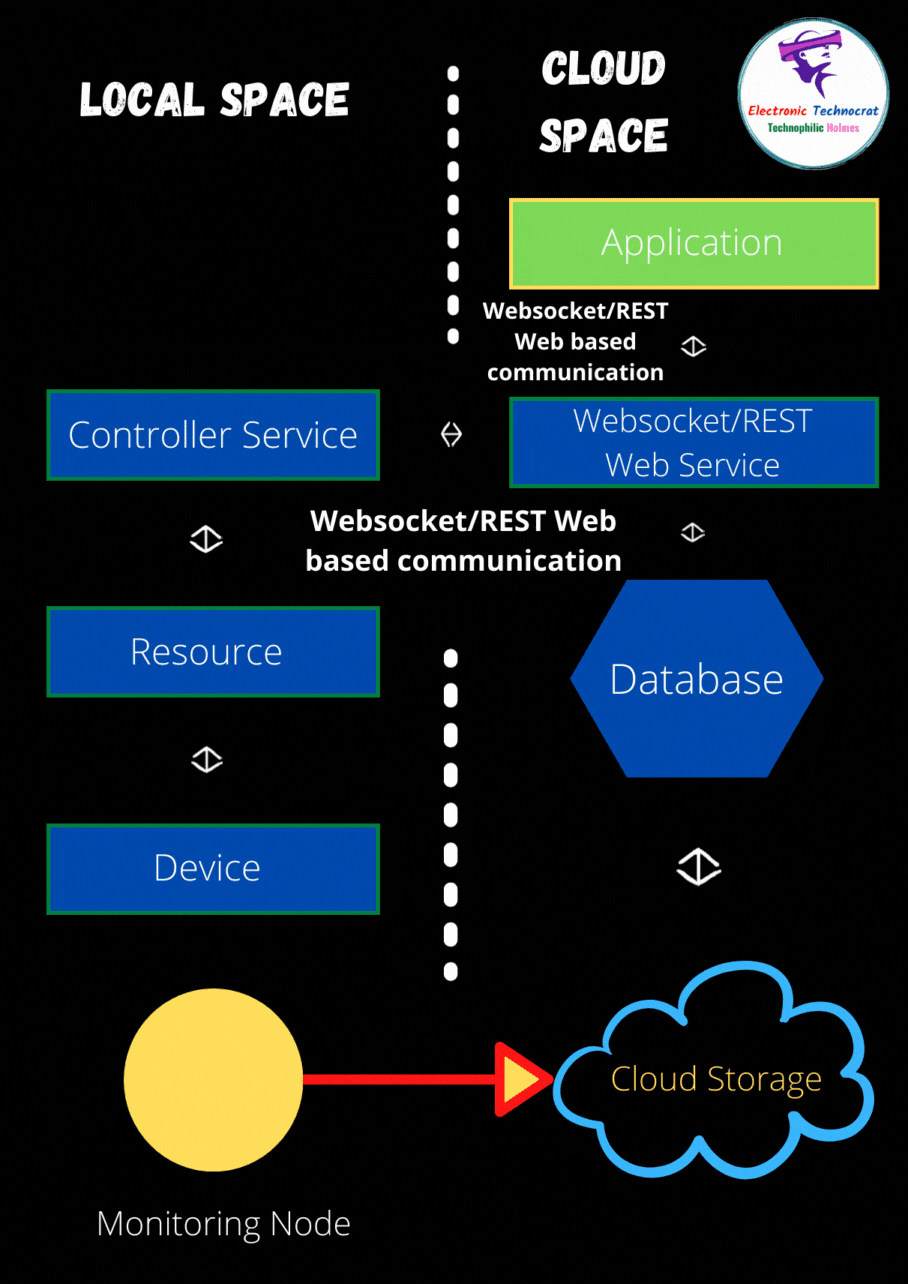
It consists of a single node that performs sensing, actuation, and local analysis (IoT Device and collected data).
In this IoT Stage, a database and framework are set up in the cloud.
It is useful for solutions where the data is large, but the primary analysis criterion is not computationally intensive and can be performed locally.
IoT Level-2 Example
Let us consider an example of Smart irrigation.
A single node monitors soil moisture and controls the irrigation system.
If the moisture level falls below the prescribed predefined threshold, the irrigation system is enabled.
An IoT system detects soil moisture, and the controller service tracks it and sends the data to the cloud.
Moisture levels are shown to users in an application, which can be used to create an irrigation schedule.
This level has a voluminous size of data. Hence cloud storage is used.
Data analysis is carried out locally. Cloud is used for only storage purposes.
IoT Level- 3
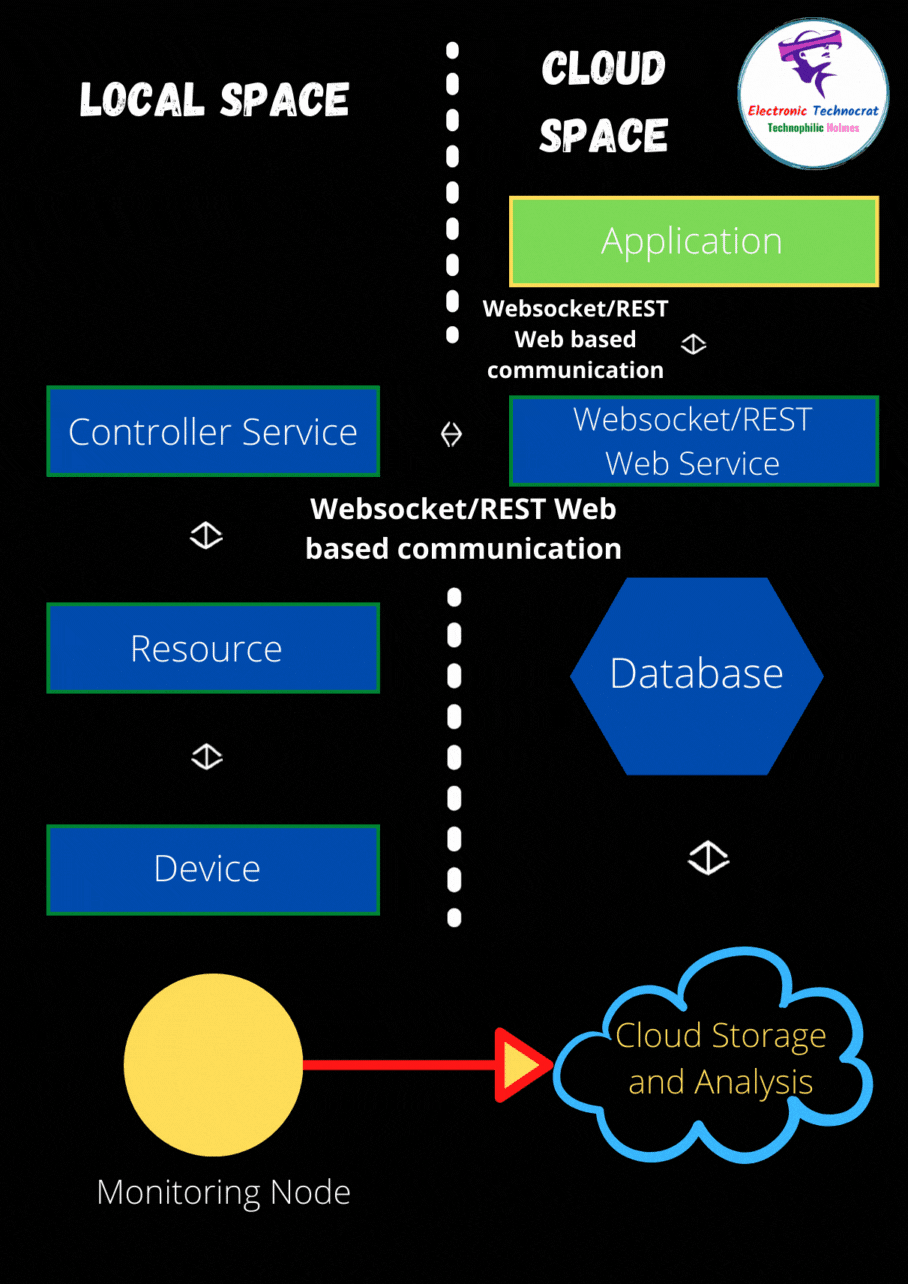
It only has one node. In the cloud, a database and an application are created.
It is appropriate for solutions involving large amounts of data and computationally intensive research criteria.
IoT Level-3 Example
As an example, consider package monitoring in a distribution system.
The movements that occur to the package are reviewed here. If they exceed the threshold, an alarm is triggered.
To detect these movements, the IoT system has gyroscope and accelerometer sensors.
The controller service uses Websocket API to send real-time data to the cloud, which is useful in real-time applications due to its low overhead.
A cloud-based WebSocket-based service retrieves real-time data from IoT devices and stores it in a database.
It retrieves it as required for analysis.
The data is voluminous, i.e. large data, in this case. The data sensing frequency is high, and the collected sensed data is stored on the cloud because it is large.
Data is analyzed in the cloud, and control actions are activated using a mobile app or a web app based on the results of the analysis.
IoT Level- 4
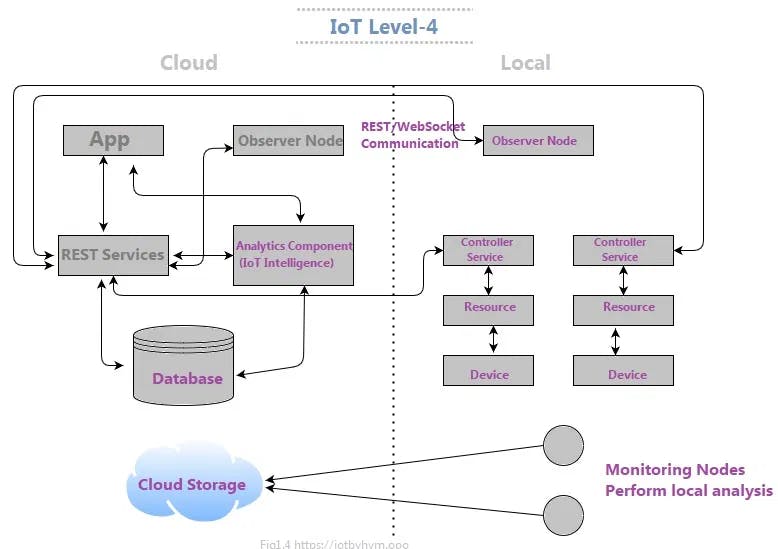
It has a number of nodes that conduct local analysis. It has a database and application that are hosted in the cloud. These IoT systems provide both local and cloud-based observer nodes that can subscribe to and receive collected data in the cloud via IoT node devices.
It is appropriate for solutions involving multiple nodes, large amounts of data, and computationally intensive analysis requirements.
IoT Level-4 Example
As an example, consider an IoT-based noise monitoring device.
In this system, several nodes are dispatched in various locations to detect noise in a specific region.
Sound sensors are examples of Nodes/Devices in this context.
Each Node/Device is self-contained, with its own controller service that delivers data to the cloud for storage and processing.
This level includes numerous sensors, data collection, and analysis, as well as a control and monitoring app.
IoT Level- 5
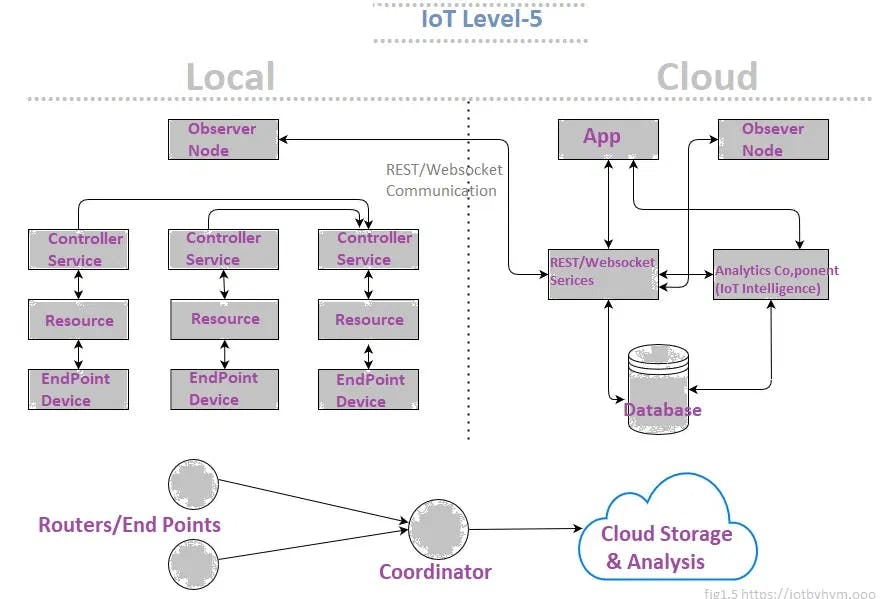
There are several end nodes and a supervisor node. For sensing and/or actuation, the end nodes are used.
The Coordinator Node model gathers data and transfers it to the cloud from the end nodes.
Ideal for solutions focused on wireless networks with large data and computer-intensive analysis requirements.
IoT Level-5 Example
Take a Forest Fire Detection System example.
Nodes/devices are mainly used to detect temperature, moisture, and CO2 levels in this kind of system.
So, what sensors could have been used properly must be clear to you? Fine! Fine! Here the sensors are used for temperature, humidity, and CO2.
These nodes detected the data, the coordinator node collects the data and the controller service on the coordinator is migrated into the cloud.
Node Coordinator serves as a portal to the IoT-based system and provides Internet access.
Analytics module can be used to predict/generate results to the data stored in the cloud.
The data collection and data analysis are performed at the cloud level.
IoT Level- 6
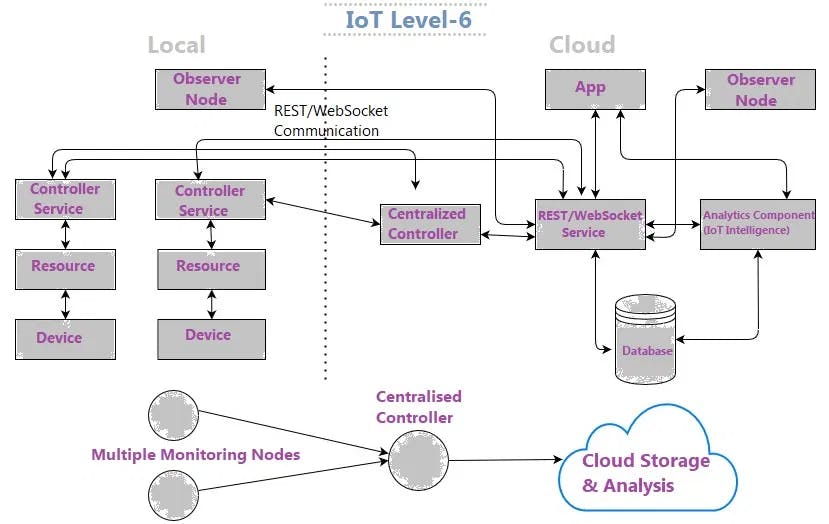
It has several separate end nodes used for monitoring and/or transferring data to the cloud. Our database is built on the Cloud.
The analytics portion analyses and stores data in the cloud database and displays cloud-based results.
The centralized controller knows all nodes' status and delivers command signals to the nodes.
IoT Level-6 Example
Take an example of a system of weather surveillance.
Numerous temperature, humidity, stress, etc. sensors are contained in this system.
These nodes are installed in various locations and are sent via the WebSocket-based API to cloud-based storage in real-time.
Any node update or changes are performed via the centralized controller.
The analytics module is used to forecast/generate reports to the data stored on the cloud.
I hope you have already understood the various IoT levels that are necessary for your IoT study. I tried to describe them in a very easy and sweet way😄. I hope you liked it!
Link to the Internet of Things: Communication Models and APIs article
